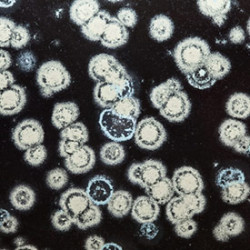Keeping Safe If You Think You Have Mold
In 2012, Superstorm Sandy became the second-costliest hurricane in U.S. history, affecting New Jersey and 23 other states. Lingering effects include persistent mold infestations resulting from chronic dampness in flooded homes. It’s estimated that it will take a minimum of seven years to fully restore affected areas.
Claire Galiano, a health and safety trainer for the Occupational Safety and Health Administration (OSHA), has been traveling Eastern states leading seminars educating residents about mold treatment. Here are some of her tips for safely dealing with an infestation in your home.
- There are several brands of paint and other items on the market aimed at preventing mold. Be sure to learn about any product you may use as some of them can be toxic.
- Black mold is the most well-known of the 16 toxic species, but testing is needed to determine whether a patch of black mold is the toxic variety.
- When cleaning out a moldy area, use a respirator, goggles and ear plugs to prevent mold spores from entering your body. Afterwards, immediately place protective gear into a plastic bag to keep the spores from dispersing to begin a new colony.
- Mold spores can become trapped in porous surfaces like wood paneling or furniture upholstering. Galliano recommends, “If in doubt, throw it out.”
- A mixture of powder Cascade, Borax soap and water makes a safe cleaning solution. Dispose of brushes, clothes and any other materials immediately after use.
If your New Jersey home requires mold treatment, let our trained technicians handle it with our innovative MoldExterm system. Visit our website to learn why MoldExterm is a safe, effective and cost-efficient alternative to traditional remediation.

